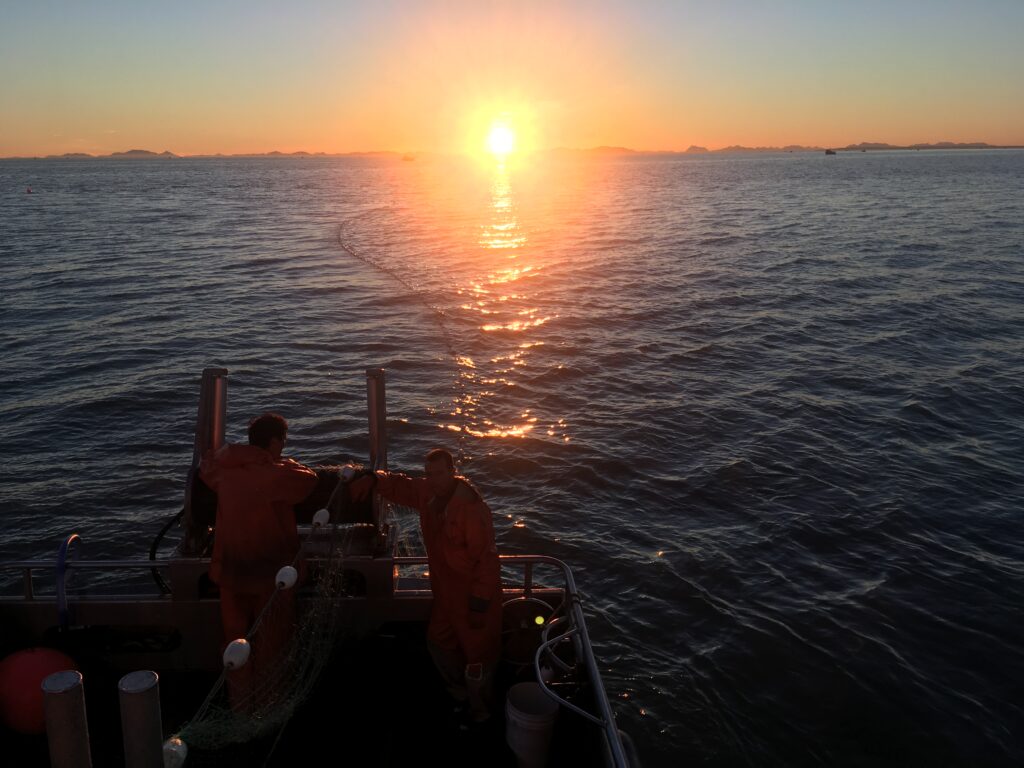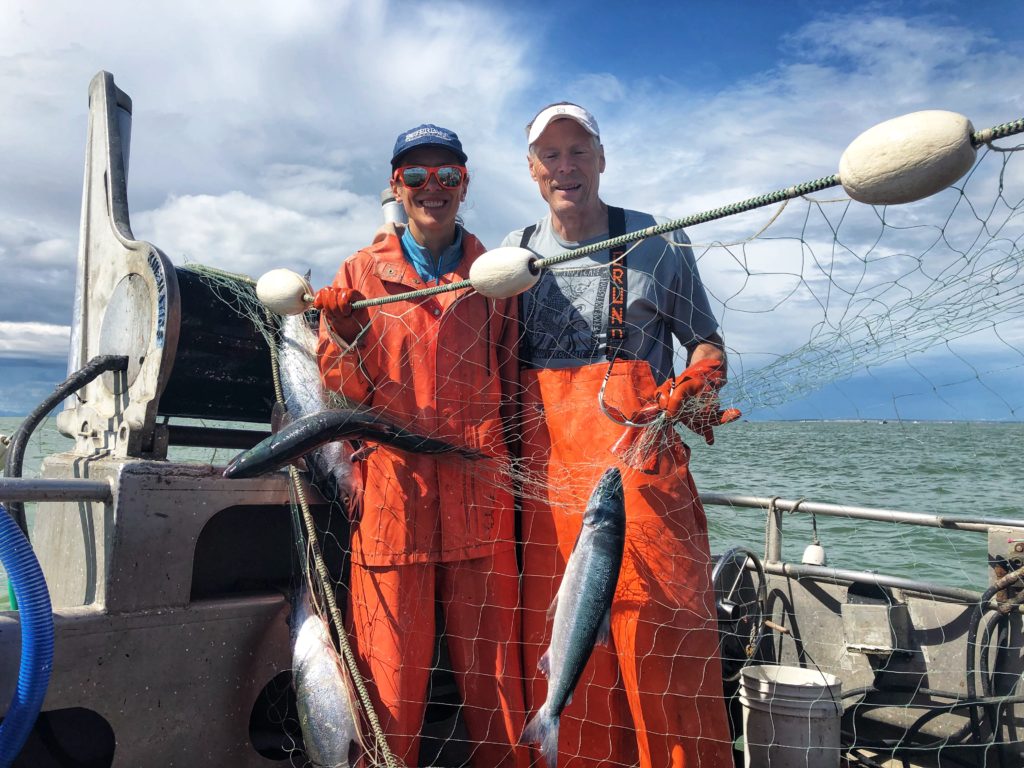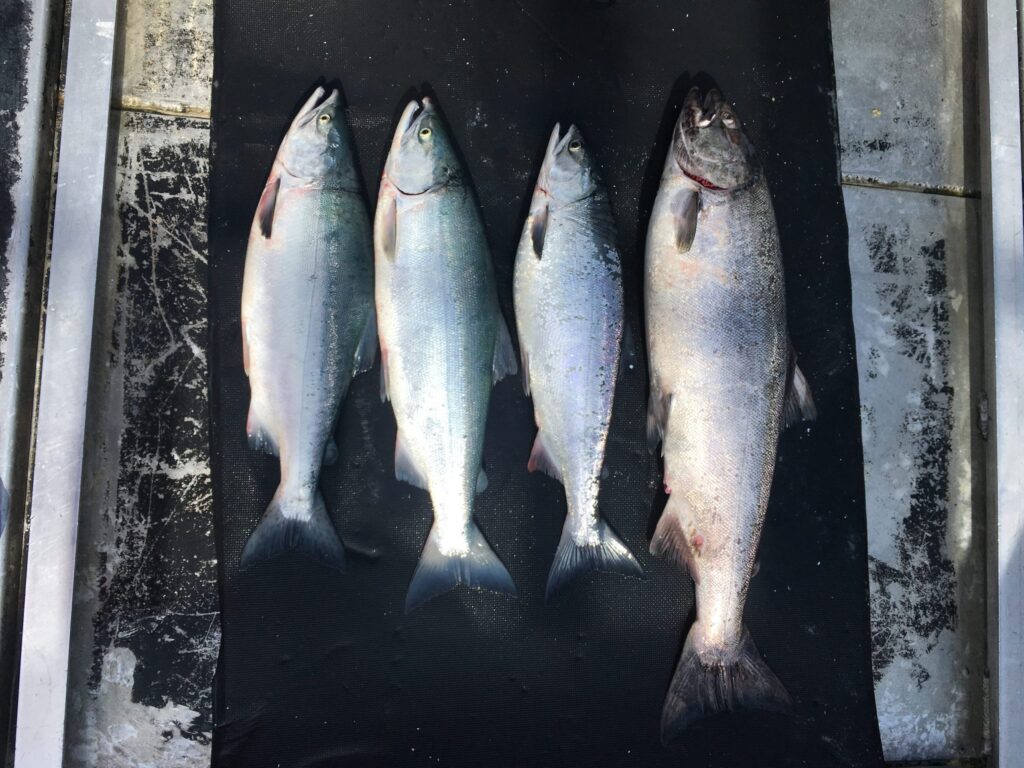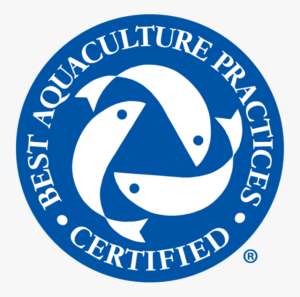Sustainable Seafood with Fisher Dave Rogotzke

When it comes to sourcing food, sustainability is one of our top priorities. We strive to provide you with food that was grown, raised, made, or caught in a manner that maintains a healthy ecological balance without depleting natural resources. For wild-caught, sustainable seafood, that means careful management of fisheries so that harvests won’t have an impact on the health of the species.
Meet Dave

For almost 20 years, Lakewinds has relied on the expertise of Dave Rogotzke to ensure that the wild-caught salmon you love was caught with care. Every year, Dave travels north from his home near Duluth, MN, to fish Alaska’s mighty Bristol Bay for delicious sockeye salmon. This fishery sits on the Bering Sea, along Alaska’s southern coast. Comprised of several river estuaries, including the Nushagak where Dave fishes, the Bristol Bay fishery yields, on average, 30 million pounds of salmon every season.
Dave started fishing with his father and brother. They bought their first boat and permit by taking out a loan against the family farm. Today he owns his own boat, The Kanista, and fishes with his daughters. The vistas are beautiful, but the work is tough. It’s more than simply pulling fish out of nets. The Rogotzkes fight against cold, wind, choppy waves, and darkness. How does Dave prepare? “I work very hard all year long at swimming, running, biking, skiing in the winter, to be physically fit for my summer to come.”
How Commercial Salmon Fishing Works
The best way to catch salmon is to work in tandem with nature. Come summer, mature salmon migrate from the open ocean to the same river where they were born to mate and spawn eggs. How do salmon find the same river? Scientists believe they navigate to the area using the planet’s magnetic field, then identify the river through scent-memories from when they spawned years prior!
This event is called a salmon run. A single river can host millions of salmon each season. In fact, fishers used to build wheels to scoop salmon directly from the river as they ran up. But this practice is unsustainable and is now banned for commercial use.
During a run, Alaska’s river estuaries teem with salmon. All a fisher needs to do is set their net and catch them as they attempt to enter the rivers. Once full, they drag the nets in, remove the salmon, and store it on ice. Then, the boats haul their catch to one of the Alaska’s many processing facilities where it’s packaged, canned, or frozen for distribution.

Why Wild-Caught Salmon is Sustainable
Alaska is home to an abundant, diverse marine ecosystem, with naturally high populations of salmon, crab, rock fish, and more. But due to global demand for wild-caught seafood, even the natural abundance of the region isn’t enough to prevent overfishing. To preserve this vital ecosystem and protect one of the state’s most important economic resources, the Alaska Department of Fish and Game and the National Oceanic and Atmospheric Administration (NOAA) carefully manage the industry to guarantee sustainability. This requires a dynamic approach of monitoring and responding to changes in the environment to ensure that commercial fishing is performed in a way that will preserve the health of the fishery.
Every year, guidelines and restrictions for fishers are set reflecting the current health of the species and ecosystem. In years of plenty, this means larger harvests and a longer season. In 2022, for example, Bristol Bay was more abundant than at any point since monitoring began in the 1880s. This led to an unprecedented 90 million pounds of sockeye caught! But sometimes the opposite is also true, like in 1998 when a decline in the region’s krill led to a much lower salmon catch.
Beyond Wild Caught
Fishing isn’t the only way to get delicious sustainable seafood. Seafood farming is one of the most common ways to source popular items like salmon, trout, and tilapia. This method, also known as aquaculture, can be incredibly friendly to the environment, particularly when supplementing supplies of over-fished species like shrimp and oysters. There are drawbacks though. For example, when Atlantic salmon is raised in open sea pens, individual fish can sometimes escape. Due to their large size, these escaped fish can have a big impact on the local food chain. On the other hand, land-based farms can have issues with water quality and animal welfare.
Like with any farm we buy from, we have strict standards for seafood farming. Since most (but not all) seafood farms are in other parts of the world, we can’t always visit them like we can with those that supply our pork, turkey, and beef. To guarantee that our farm-raised seafood is clean and humane, we rely on certifications by the Best Aquaculture Practices organization.

Like other third-party certifiers such as the Real Organic Project and Ecological Outcome Verification, BAP is independent from the farms they certify. Their comprehensive, end-to-end certification ensures that the farmed fish you buy meet the high standards you’d expect from Lakewinds. They measure the quality of the water, the feed, the processing, and the packaging. Each farm is graded based on their environmental responsibility, animal health and welfare, food safety, and social accountability. Look for the BAP certificate on farm-raised seafood at the co-op.
Regardless of whether you choose wild-caught or farm-raised, you can eat with ease knowing the seafood you buy at the co-op was sourced responsibly and sustainably. Now that you know how it gets here, it’s time to start planning how best to eat it! Check out our recipes page for some of our best sustainable seafood recipes!
